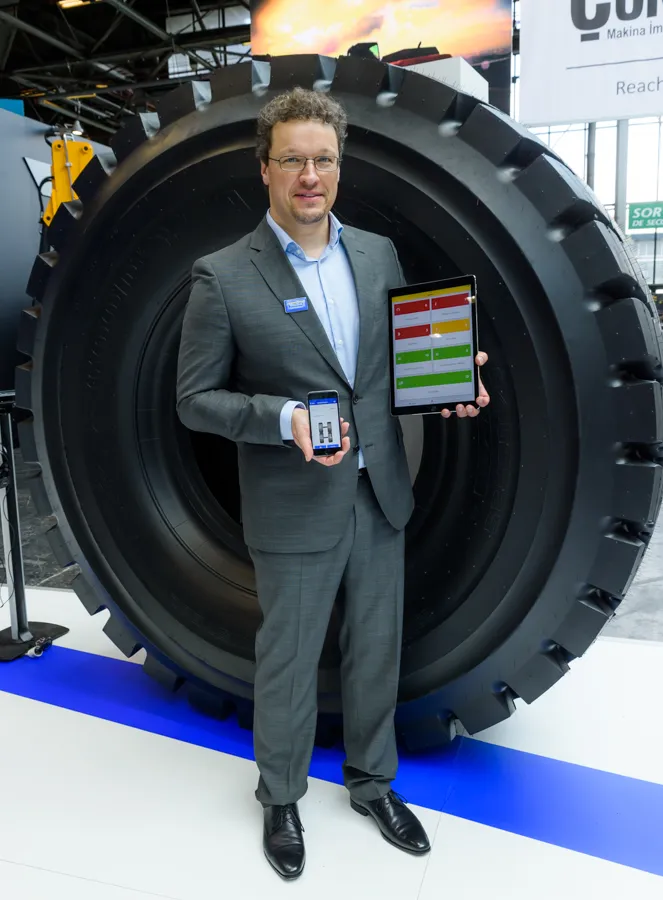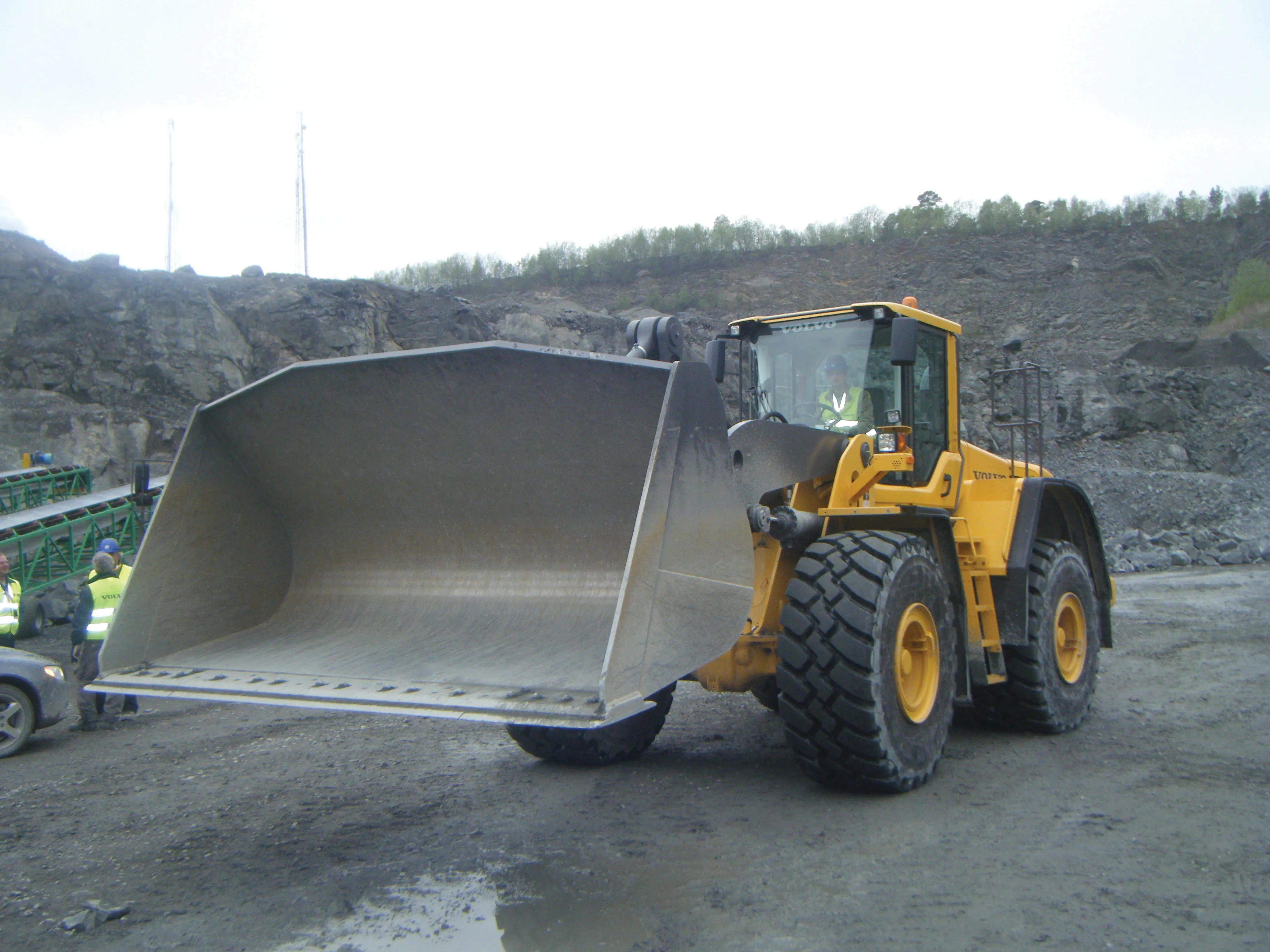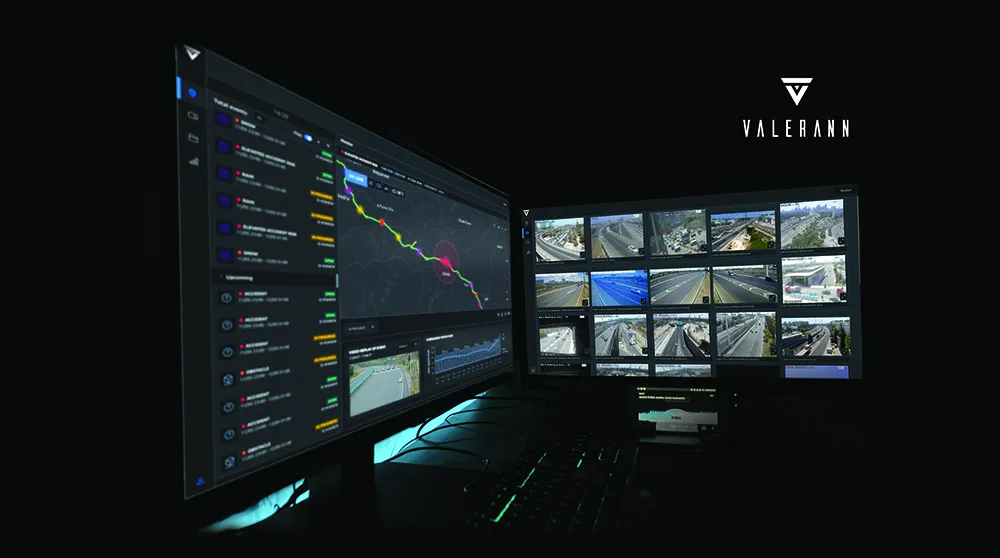
TPMS (Tyre Pressure Monitoring System) Heavy Duty will, in combination with Goodyear premium tyres and services, help OTR fleets optimise tyre performance, reduce downtime and improve total cost of ownership.
The prevention of tyre-related incidents through the use of TPMS Heavy Duty reduces breakdown costs and is said by Goodyear to increase dump truck, wheeled loader and mobile crane working hours by up to 15%, due to tyres having the right pressure at all times.
The TPMS Heavy Duty solution works via sensors, which measure both tyre pressure and temperature, fitted to each tyre. Signals from each of these sensors are received by an on-board router, which continuously sends this information to the Goodyear server via the mobile network. This data is then analysed using Goodyear algorithms featuring G-Predict technology developed by in-house experts. The server sends daily reports by email to the fleet manager.
In the event of a potential issue, alerts are sent from the server to the fleet manager via email and/or by an app in real time using a graphic showing which tyre is affected and how serious the problem is.
The on-board router in the system has a built-in GPS Track & Trace function. This function can identify a machine so that it can be pin-pointed on a site or located if stolen.
Later this year Goodyear will launch an additional app for drivers, so they can also be alerted to any tyre issue in real time.








